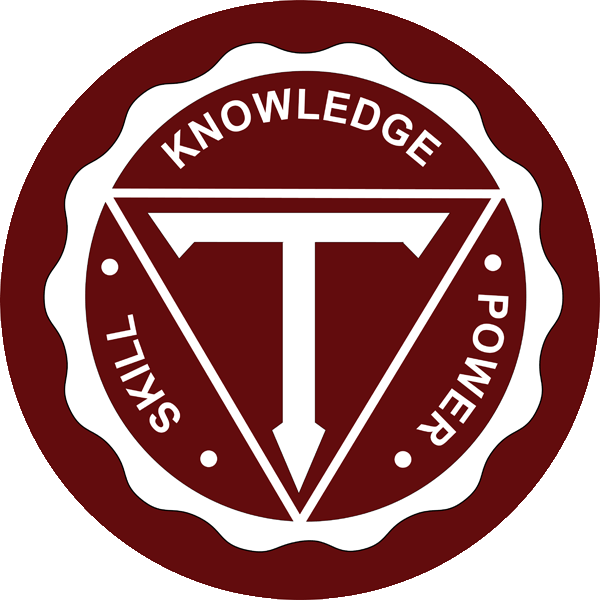


Hutchinson Central Technical High School
Course Syllabus
Course Name: Electronic lab
Instructor: Mr. Youngman Contact Time: 9:42-10:23 Phone Ext: 316
Grading Policy
LABS 30%
TESTS 30%
NOTEBOOK 10%
CLASSROOM PERFORMANCE 10%
HOMEWORK 10%
QUIZES 10%
Homework Policy
Homework will be given on a daily basis. Homework will be part of your notebook check. If a homework is missing this will make your notebook incomplete.
Test Policy
Tests 30%
The day before the chapter test we will review the work in class. Therefore, attending school daily will improve your knowledge of the course.
Tests are given at the end of each Unit based on a total of 100 points
LAB 30%
LAB PRACTICAL: Students are required to demonstrate proficiency in the assembling and testing of electrical circuits.
Students are required to demonstrate proficiency in proper use of electronic equipment
Quiz Policy
Quiz Policy 10%
Quizzes will be given on every "A" day. Be prepared.
Projects
Final project will be based on your notebook. Your notebook will include all assignments, homeworks and labs. Written labs and schematics will be done neatly. Notebook check will be done on a weekly or bi-monthly basis.
Course Outline
CURRENT AND VOLTAGE
(1) MINI-MATH REVIEW SIGNED NUMBERS, EXPONENTS, POWERS OF TEN,
METRIC PREFIXES
(2) THE STRUCTURE OF MATTER - THE ATOM, THE MOLECULE
(3) CURRENT - COULOMBS/SEC, AMPERES, AND THE AMMETER
(4) VOLTAGE - EMF, VOLTS AND THE VOLTMETER
II RESISTANCE AND POWER
(1) MINI-MATH REVIEW RESISTANCE UNITS AND FORMULAS
(2) RESISTANCE - THE OHM, OHM'S LAW, THE OHMMETER
(3) POWER - THE WATT, THE KILOWATT HOUR, THE KILOWATT HOUR METER
III CONDUCTORS, INSULATORS AND RESISTORS
(1) CONDUCTORS AND CONDUCTANCE
(2) TEMPERATURE EFFECTS ON CONDUCTORS
(3) CONDUCTORS CURRENT CARRYING CAPACITIES
(4) CONDUCTOR TYPES
(5) INSULATORS - TYPES AND BREAK DOWN VOLTAGES
(6) RESISTORS - WATTAGE RATING AND COLOR CODING
IV ELECTRICITY LAB EXPERIMENTS
(1) ELECTRICAL SHOP SAFETY
(2) SOLDERING TOOLS AND TECHNIQUES
(3) SOLDERING PRINTED CIRCUIT BOARDS
V DIRECT CURRENT
(1) D.C. SOURCES - BATTRIES, POWER SUPPLIES, SOLAR CELLS
(2) D.C. SENSORS - TEMPTERATURE, LIGHT, PRESSURE, & MAGNETIC
(3) D.C. ELECTROMAGNETISM - RELAYS, SWITCHES, & SOLENOIDS
(4) EQUIPMENT PROTECTION - FUSES, CIRCUIT BREAKERS, & GFI'S
VI SERIES CIRCUITS
(1) COMPONENTS IN SERIES
(2) CURRENT IN SERIES
(3) RESISTANCE IN SERIES
(4) VOLTAGE IN SERIES
(5) POWER IN SERIES
(6) TROUBLESHOOTING A SERIES CIRCUIT
VII PARALLEL CIRCUITS
(1) COMPONENTS IN PARALLEL
(2) VOLTAGE IN PARALLEL
(3) CURRENT IN PARALLEL
(4) RESISTANCE IN PARALLEL
(5) POWER IN PARALLEL
(6) TROUBLESHOOTING A PARALLEL CIRCUIT
VIII SERIES/PARALLEL CIRCUITS
(1) COMPONENTS IN SERIES/PARALLEL COMBINATION
(2) TOTAL RESISTANCE IN SER/PAR
(3) VOLTAGE DROPS IN SER/PAR
(4) BRANCH CURRENTS IN SER/PAR
(5) POWER IN SER/PAR CIRCUITS
(6) TROUBLESHOOTING SERIES/PARALLEL CIRCUITS
VIX ELECTROMAGNETIC DEVICES
(1) ELECTROMAGNETISM
(2) MAGNETIC TERMS AND DEFINITIONS
(3) ELECTROMAGNETIC INDUCTION
(4) APPLICATIONS OF ELECTROMAGNETIC INDUCTION
Alternating Current
(I) AC
Mini-Math Review—Trigonometry
The 3, 4, 5, Right-Angle Triangle
Opposite, Adjacent, Hypotenuse, and Theta
The Difference between DC and AC
Why Alternating Current?
Power Transfer
Information Transfer
Electrical Equipment or Electronic Equipment?
AC Wave Shapes
The Sine Wave
The Square Wave
The Rectangular or Pulse Wave
The Triangular Wave
The Saw tooth Wave
Other Waveforms
Measuring and Generating AC Signals
The AC Meter
The Oscilloscope
The Function Generator and Frequency Counter
Handheld Scope meters
(II) Capacitors
Capacitor Characteristics
Charging a Capacitor
Discharging a Capacitor
Electrostatics
The Unit of Capacitance
The Capacitance Formula
Capacitors in Combination
Dielectric Breakdown and Leakage
Capacitor Types, Coding, and Testing
Capacitor Types
Capacitor Coding
Capacitor Testing
DC Capacitive Circuits
Charging
Discharging
Capacitive Circuits
Phrase Relationship Between Current and Voltage
Capacitive Reactance
Series RC Circuit
Parallel RC Circuit
Applications of Capacitors
Combining AC and DC
The Capacitive ‘Voltage Divider
The RC Filters
The RC Integrator
The RC Differentiator
(III) Electromagnetic Devices
Electromagnetism
DC versus AC Electromagnetism
Magnetic Terms
Flux Density (B) Versus Magnetizing Force (H)
Application of AC Electromagnetism
Electromagnetic Induction
Faraday’s Law
Lenz’s Law
Applications of Electromagnetic Induction
(IV) Inductors
Inductor Characteristics
Inductance
The Inductor
Inductance Formula
Inductors in Combination
Inductor Types and Testing
Inductor Types
Inductor Testing
DC Inductive Circuits
Current Rise
Current Fall
AC Inductive Circuits
Inductive Reactance
Series RL Circuit
Parallel RL Circuit
Applications of Inductors
RL Filters
RL Integrator
RL Differentiator
(V) Transformers
Transformer Characteristics
Basic Transformer Action
Transformer Loading
Windings and Phase
Coefficient of Coupling
Transformer Losses
Transformer Ratios and Applications
Turns Ratio
Voltage Ratio
Power and Current Ratio
Impedance Ratio
Transformer Types, Ratings, and Testing
Transformer Types
Transformer Ratings
Transformer Testing
(VI) Series and Parallel RLC Circuits
Series RLC and Parallel Circuits
Series RLC Circuit
Impedance
Current
Voltage
Phase Angle
Power
Parallel RLC Circuit
Voltage
Current
Phase Angle
Impedance
Power
Resonance
Series Resonance
Parallel Resonance
Applications of RLC Circuits
Low-Pass Filter
High-Pass Filter
Band-pass Filter
Band-Stop Filter
Mini-Math Review: Complex Numbers
The Real-Number Line
The Imaginary-Number Line
The Complex Plane
Polar Complex Numbers
Rectangular/Polar Conversions
Complex Number Arithmetic
How Complex Numbers Apply to AC Circuits